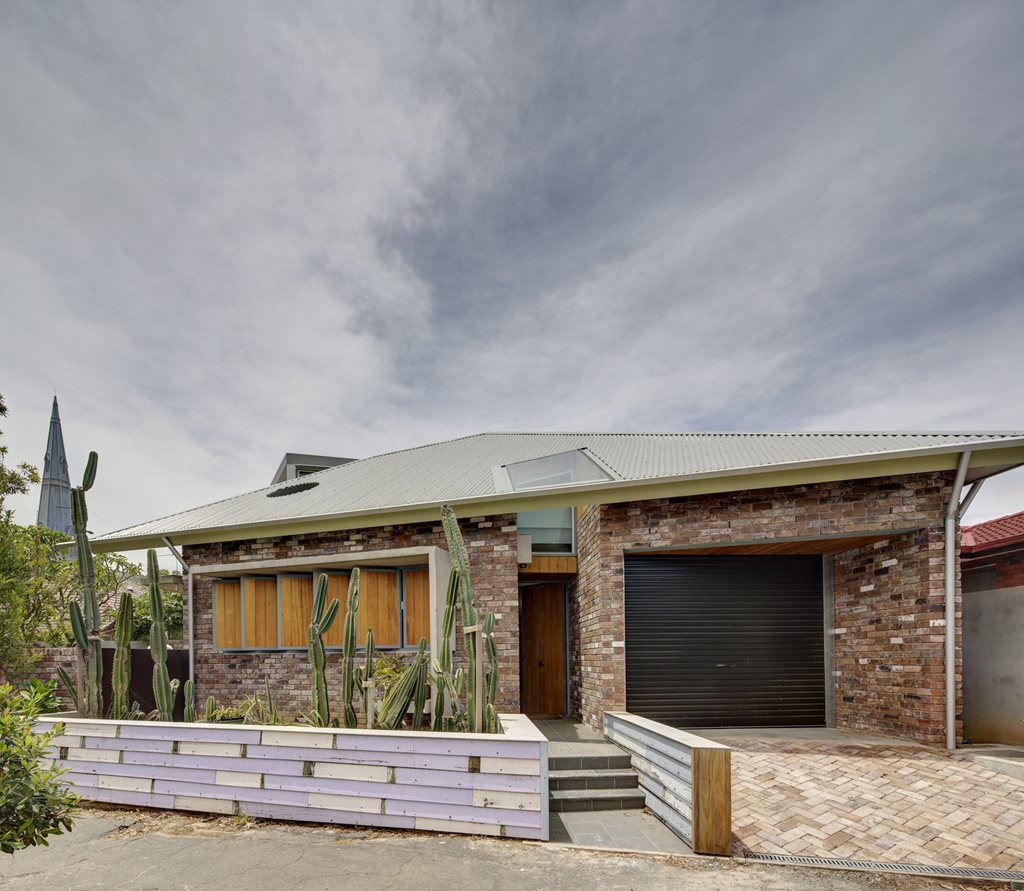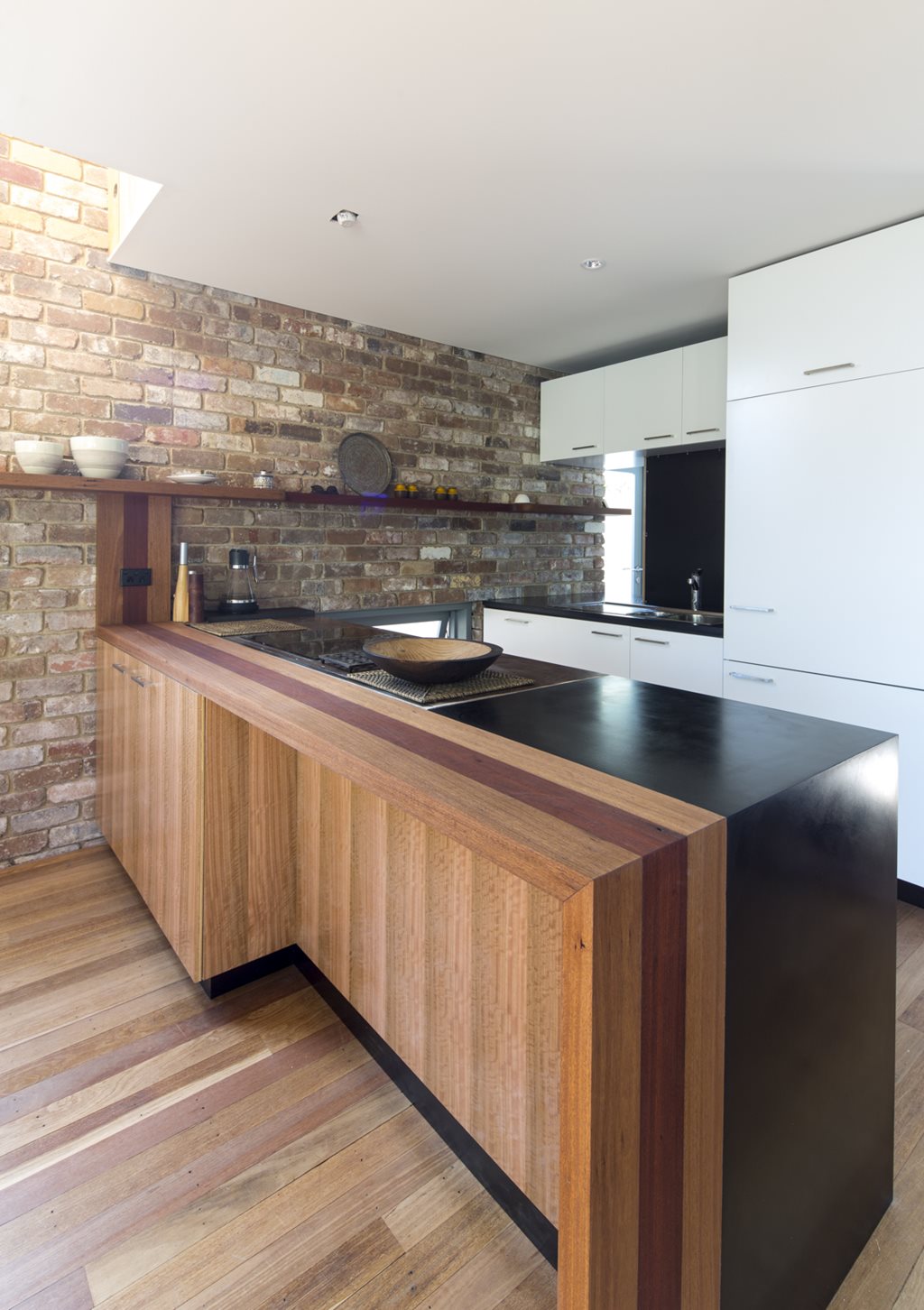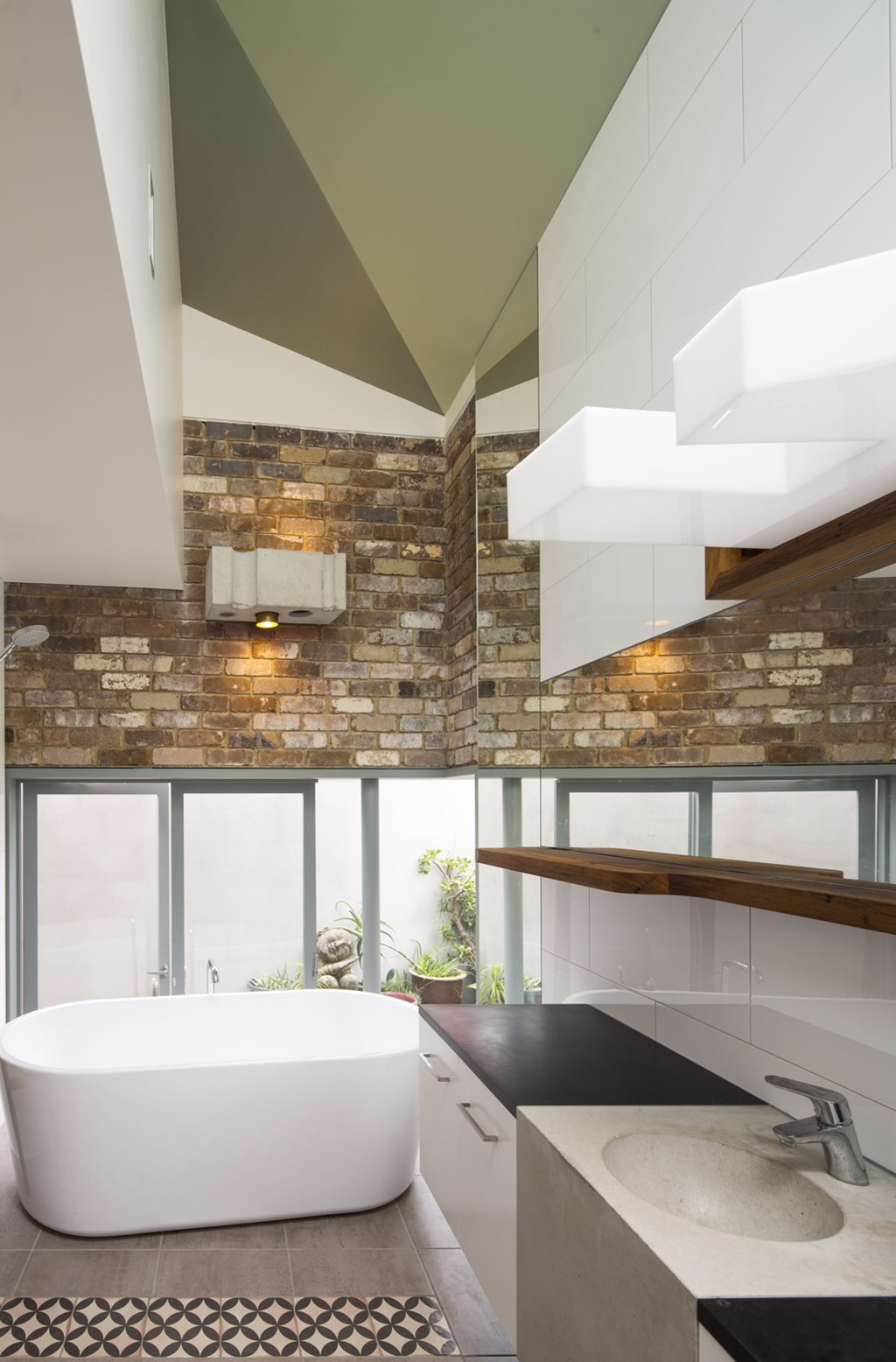In a bid to maintain the character of the old 1890’s cottage that stood on this Marrickville site, Drew Heath Architects constructed Nikki Maloney’s House by breaking up the original dwelling and recycling it to continue a dialogue with the history of the site and the memories of the client.
The brief for the project was to build a cosy and comfortable home that told a story of its past, while still maintaining a large, north-facing garden on its awkward triangular block.
This created challenges for the team, however was overcome by designing the house into two wings, or into a ‘C’ shaped plan, that ran parallel with the two long boundaries, enclosing a large courtyard. On the ground floor these wings are living areas that have sliding glass doors which open onto a shared outdoor space, stretching the dimensions of the internal rooms and providing an extra outdoor living area.


The building is made up of a simple 'C' shaped plan that faces north to trap sun. Overhangs, ventilation and landscape allow us to control the internal climate. Photography by Owen Zu
Another key environmental feature of the house is the connection between inside and out. Both the lower living rooms and the two bedrooms, which sit directly above them, open to greenery. The bedrooms both look out to treetops and have rooftop gardens with plants that will grow and drape down over the lower building.
“The interior is a series of vistas and volumes that link views to landmarks, the internal landscape and the spaces, objects and people within,” says Drew Heath.
“Underlying this is the intention to make a building that respects the streetscape and the suburb.”


“The garden is such an important place of agriculture that is can contribute so much to the sustainability of the project.” – Drew Heath Architects. Photography by Brett Boardman (top) and Group Shot (above)
The significance of Nikki Maloney’s house lies in the story of the materials it is made of. The bricks are all recycled, with some saved from the previous cottage to create a double-bricked exterior. The timber details of the old site were also salvaged, including recycled kauri pine flooring, hardwood frames for handcrafted shelving throughout, and a feature wall made of recycled wooden shingles now located under the corrugated iron roof. The floors are also recycled from a warehouse in Botany.
The recycling of material was a crucial element in the design of the house for both the client and architect. The house in the end became a recreation of the previous cottage the client had lived in for 20 years prior to development, and on a larger scale, still remains the essence of a 1890s single story, pitched-roof cottage. Heath notes that the time and budget for Nikki Maloneys were invested in creating solid hand-made details and a house that sits comfortably in the suburb.
“I have always seen this as a low budget house,” notes Heath.
“It is really basic materials, generally exposed and not overly finished. I think it is fair to say that the cost of the house is related to the house pricing of the area, it’s of the same materials and scale and I believe that this somehow makes it sit more comfortably in the suburb.”

 The interior linings are a mixture of materials from the previous cottage. The old shingles are used in a feature wall, the weatherboards on the front wall and the frame is made into shelves throughout the house. Paperock was used as the benchtop material while Lanotec was used on clear timber finishes. The concrete and copper lightboxes were designed by Drew Heath. Photography by Brett Boardman
The interior linings are a mixture of materials from the previous cottage. The old shingles are used in a feature wall, the weatherboards on the front wall and the frame is made into shelves throughout the house. Paperock was used as the benchtop material while Lanotec was used on clear timber finishes. The concrete and copper lightboxes were designed by Drew Heath. Photography by Brett Boardman
The obvious things of sustainability are all there; small footprint, solar hot water, natural ventilation, low VOC finishes, low voltage appliances and the recycling of materials,” he continues.
“What is a bonus is the haven this has become for wildlife as the garden is this houses focus, anywhere from stray cats to native birdlife, to plants found and saved, for me it’s a centre of sustainability in Marrickville!”
Nikki Maloney’s House was completed in 2015 and won the 2015 New South Wales Architecture Awards for Sustainable Architecture.

